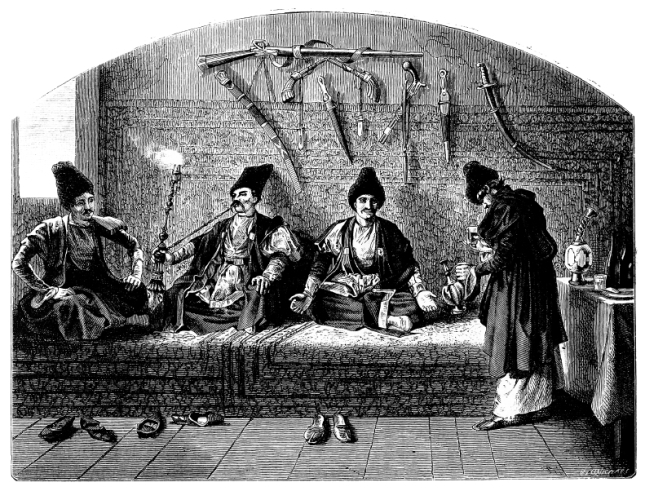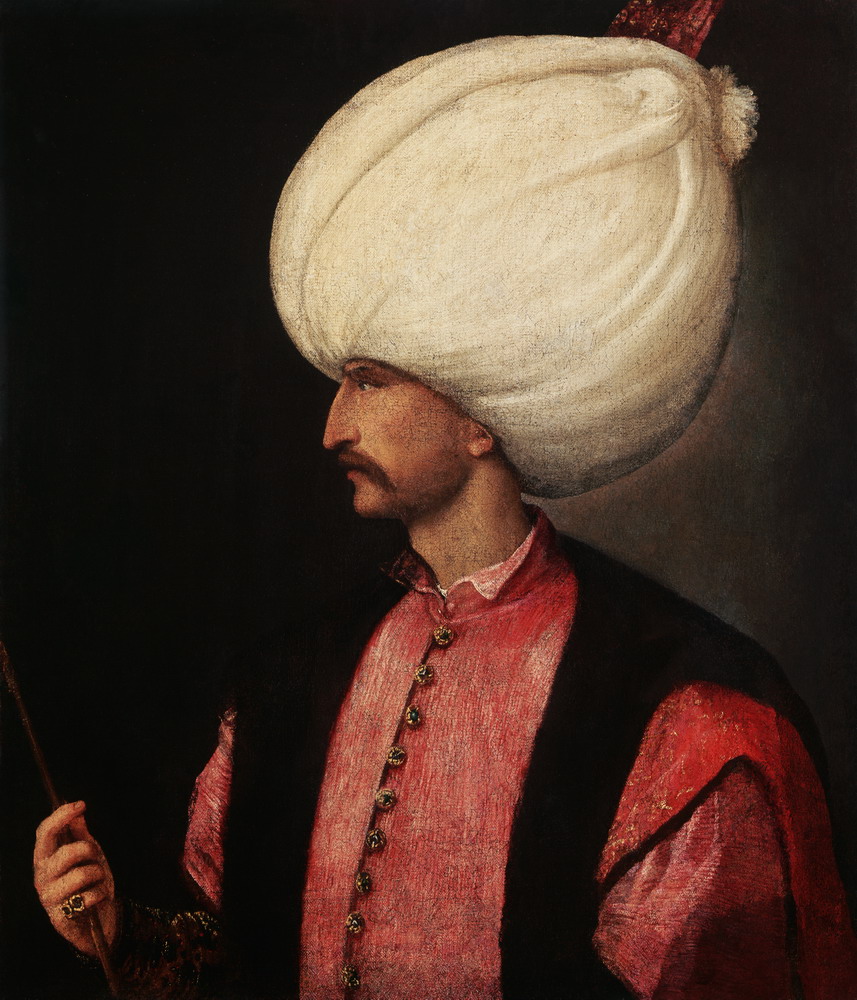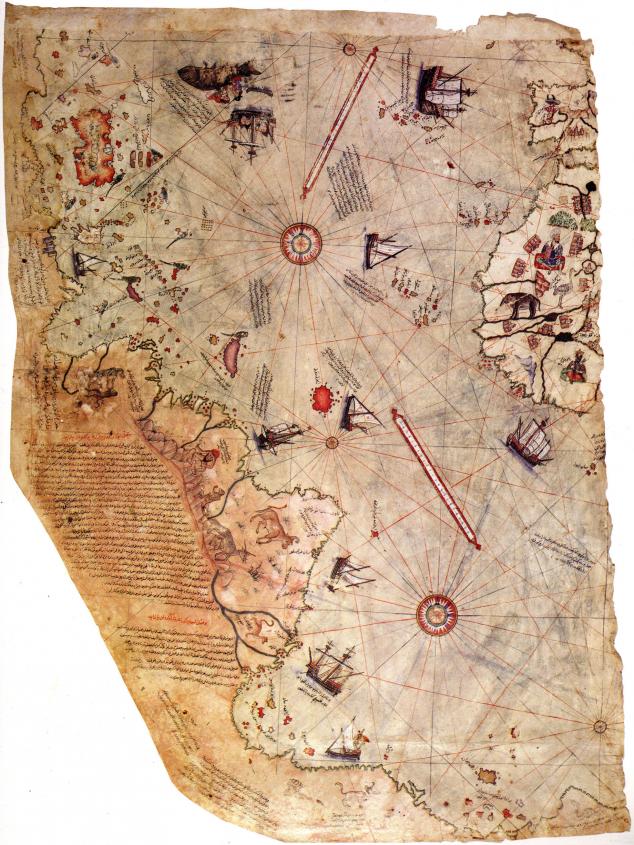In this second of a two part series, we look at life in the Ottoman Empire for an average person, and the factors that led the Empire to the gates of Vienna … and why Vienna remained an elusive goal. Finally, we re-examine the myth of the Empire’s long “decline and fall,” which lasted longer than English settlement in North America. Was the Empire truly the Sick Man of Europe, or is there another version of this story?
Guests
 Barbara PetzenDirector of Training Initiatives at the Abshire-Inamori Leadership Academy at the Center for Strategic and International Studies
Barbara PetzenDirector of Training Initiatives at the Abshire-Inamori Leadership Academy at the Center for Strategic and International Studies
Hosts
 Christopher RosePostdoctoral Fellow, Institute for Historical Studies, The University of Texas at Austin
Christopher RosePostdoctoral Fellow, Institute for Historical Studies, The University of Texas at Austin
In the first episode, we talked about who the Ottomans were, where they came from, and ended up by talking about life among the military elite corps, the Janissaries.
A follow on question to that is: what was life like for a normal person in the Ottoman Empire?
Life varied enormously depending on what you did for a living. So, if you are a transhumescent nomad who’s taking your sheep around the hills of Anatolia, that’s one thing. We know much less about their lives. But, because most of our sources are sources about urban culture and lifestyle, we actually know an enormous amount about what life was like if you were an upper middle class merchant family in Constantinople, for example. So, we know what you did with your leisure time, we know what kind of music you might have listened to, we know a fair amount.
What you might have done, for example, on your off days is to go the baths. There were many public baths in Constantinople, as in other major cities of the empire. It’s very interesting because if you look at European depictions of the Ottoman bath houses, they’re usually filled with naked and semi-naked women, but this is in fact something that both men and women enjoyed–not together! You had bath houses that were either divided into male and female halves, and they were entirely separate, or you would have different hours for men to go and then for women to go.
These were single-sex social spaces. This wasn’t just about getting clean. This is not where you would go, for example, to wash yourself before prayer, this was a spa experience, if you will. What would often happen is that you would go and, oddly enough, I think, especially for women it’s where you would show off your clothing before you took it all off, or when you put it all back on. It was about conspicuous consumption and cultural competition as much as it was socializing, or perhaps socializing is always about those things. It was about people showing off their sense of style and sense of fashion, very wealthy women who had young slaves that they were bringing up in the household and would get to show them off.
It was really family space: there were lots of children running around, your own children and the children that they were raising as adopted children. There would be food, so they would take picnics to the bath house, and they would of course conduct the kind of trading that women did domestically, which was the marriage market. They would talk about those kinds of household alliances, they would gossip, which is, of course, the exchange of information in the domestic sphere–we kind of degrade it by calling it gossip, but it serves a very important social function.
Men would, of course, also do their trading and make deals. You know, we have this kind of stereotypical image of the mafioso men sitting in the steam room at the bath house–well, if you put them in Ottoman gear, or maybe out of Ottoman gear! That stereotype would really hold true in the Ottoman empire as well. So, that was a social space.

The other big social space, the other big story is coffee. We have Starbucks on every corner now, and this is something that the Ottomans would totally have understood–
–although they would not have recognized what Starbucks serves as coffee–
–no, certainly not! The latte macchiato half-caf steamer is not an Ottoman invention, that is true. But the Ottomans did have coffee, they were really the first. It was a pair of Ottoman brothers who brought coffee out of Arabia where it had started gaining currency after it first started to be drunk as a beverage in Ethiopia and/or Yemen (you can argue about the provenance —
–and they do–
–and they do). But it comes to Istanbul in the early 16th century and very rapidly, in pre-modern terms, gets taken by the trading company there to Venice, to Amsterdam, to London, et cetera, where we know the kind of social upheaval that it was part of. It had exactly the same kind of effect in Istanbul, that is, coffee doesn’t happen on its own. It doesn’t come in as a commodity that people take into their houses and drink in the privacy of their home. In fact, it becomes one of the first places outside of the bath house and the mosque that people can congregate, and one of the only places that they can legitimately do so in the evening. So, suddenly you have social space that’s open late into the night where people can gather. And, what do people do when they gather? Well, they chat. And what do they chat about? Politics!
Well, now we have an issue for the Sultan, because when large numbers of people gather together and chat about politics until early hours of the morning, that’s not likely to lead toward stability. So, you had a very interesting convergence of interests where you had certain religious scholars that were concerned about this new thing, often religious scholars are concerned about things just because they’re new. You had some conservative scholars saying, “I’m not sure about this whole coffee thing. Sounds like wine to me. It has a strong impact on the body. I think we should forbid it because wine is forbidden in the Qur’an, and so coffee should be forbidden.” And then you had others, including most of the Sufi community, who say, “Hey, wait a minute. Coffee helps you stay up at night and pray, so it must be a good thing in religious terms.” So, you had this debate raging amongst religious scholars.
Then, on the other hand you had the Sultan and his administration saying “Coffee is bad, because coffee houses are not controllable.” And so they finally decided to say no, they said no to coffee, and were going to close the coffee houses, but by this time the population was addicted and they were having none of it, and it would have been impossible to eradicate coffee houses from the scene, and so we still have them.
So, this was life in the Ottoman Empire at its peak. Would it be fair to suggest that the attempted conquest of Vienna was really the pinnacle of the Ottoman expansion period?
In some ways you can look at the expansion up against the walls of Vienna on the one side, and then the expansion through much of the Arab world–the conquest of Mecca and Medina–you get to the point by the end of the 17th century, that’s as big as the Ottoman Empire gets. In territorial terms, it doesn’t get bigger than that. They run up against Vienna a couple of times, fail to take it, partly for reasons of bad weather–luck factors in–and also for the reason that they’re pretty much at the end of their supply lines. It’s very difficult to get that far when you’re coming from Constantinople.
It is some times easy to forget the distances involved. If you think, for example, that the border of the Ottoman empire was basically the modern Moroccan/Algerian border–even if you fly from Morocco to Istanbul today, that’s a six hour flight. That’s an incredible amount of distance when you have to do it in a galley that rowed physically, or in a sailboat.
Absolutely, or if you’re marching to Vienna, that’s a very long way. It’s going to take you two or three months to get there, dragging all of your artillery, with very large armies that all demand to be fed! Twice a day! That’s a lot of food. All of these animals that drag your heavy artillery, all of the tents that you have to bring–all of these things. The logistics of moving a pre-modern army are absolutely enormous. And, of course, you only have a certain amount of time that you can go. You can’t do it in the wintertime, and you have soldiers that have to get back and harvest in the fall. So, you’re limited in how long your campaigns can be given the time it takes to get there and the time it takes to get back. If you work that into the calendar, it means you’re going to be marching toward your objective through the rains of spring, and that’s in fact what the armies ran into. Weather played an enormous role, and the limits of how far you could get people in a fighting season, knowing that you’re going to have very rusty troops when they know they should be back harvesting their crops, and if they don’t they’re going to be very hungry next winter–that all gets factored in. And that’s kind of the limits of territorial expansion, so the problem is, though, that when we think, “Second siege of Vienna, the Ottomans don’t take the city, from here on out it’s decline.” And that’s where we really get into a problematic situation.
It’s odd that we necessarily equate the end of expansion with decline.

What would you consider to be the Golden Age of the Empire?
You know, I have a problem with Golden Ages. I think part of the issue when we think about history is that we want any polity to have its peak where everything is perfect, and then it’s decline when everything goes off the rails, and I think that’s really a bad way to look at history. Certainly from a European perspective we can look at the age of someone like Süleyman, whom they called the Magnificent because he had systematized, for example, the tax system so that there was a lot of revenue coming in, so he could buy lots of glittery stuff, and the empire was big and it was expanding and it looked scary to Europeans–that’s magnificence.
As a social historian, though, what’s interesting to me is not just the political expansion of a state but how are the people living, and how are different groups benefitting, and I think that when we usually look at the Ottoman Empire and its Golden Age, Golden Age means that some people are losing out. So, you can talk about it as people who are incorporated into the empire, they’re losing their autonomy. You can look at it in terms of people who might otherwise have had more local autonomy losing that under a system that’s more centralized, so whether you’re talking about Sufi brotherhoods, for example, or local notables in a provincial city–Aleppo, maybe, or Damascus, or Konya–who lose their autonomy because they’re more closely tied to a central bureaucratic system. It looks great from the empire’s perspective because they’re able to control more and bring in more revenue from taxation, but if you’re the one paying more taxes, you might have an issue with that.
You can compare this to debates in American society today between those who want a small federal government with less taxation and more local autonomy to people who want a stronger role for the federal government so that you have an equitable system across state lines that goes toward national objectives with everybody’s money. Those are two perfectly legitimate perspectives. But, depending on who is in the White House, or who controls the machinery of state in Washington, DC, there are going to be some people on the outside of the reigning philosophy who are going to be very dissatisfied.
So, even during the reign of Süleyman the Great, who’s called the “Lawmaker” in Turkish historiography, there were a lot of people who were discontented at that centralization, or who thought, “Hey, you’re not doing as great as your dad did, or your grandfather, things are already starting to decline.” Nothing is ever perfect when you’re living through it. On the outside we may see it as a Golden Age because of its political success, but on the inside, there’s always divergent voices.
When you look at the span of Ottoman history, the first state was founded roughly around 1300, and it was dissolved in 1923 with the founding of the Republic, and Süleyman the Magnificent is somewhere around 1522 til the latter part of the century … and a lot of times, particularly in textbooks, you have: Rise of the Ottomans, Conquest of Constantinople, Süleyman the Magnificent, 1918. Somehow, everything after Süleyman is the period of decline … which just to lend perspective, at the period this “Decline” began the U.S. was the Jamestown settlement, and then all the way up through World War I. So, what would be a more nuanced way at looking at this period? It’s unquestionable that, by 1918, the Ottomans were technologically and economically struggling to keep up with Europe, but simply saying that after the 16th century the Ottomans declined seems like a really simplistic explanation for what happened.
Yeah, I think that anyone who can decline for 400 years has to be doing something right. If you can decline longer than most empires–certainly longer than the American “empire,” there’s something else going on there. It always has reminded me of an Oreo with no filling. Typically our treatment of the Ottoman Empire both doesn’t have any social or economic filling, we talk about the political events and not other things that were going on, and it’s chronologically missing its middle. We get rise, Golden Age, and then Decline and Fall. And it must have been in decline the whole way after Süleyman.
So, clearly that’s problematic because we have to define what decline means and how can you decline for that long without going under. I think part of the answer, is, if we think about decline, just as we thought about Golden Age, as having winners and losers. So, if Süleyman’s achievements as “the lawgiver” were to centralize things, to regularize and bureaucratize things, then Decline for Ottomans in the central administration would be when that synthesis, when that centralization starts to fall apart, so when you have decentralizing tendencies like the institution of tax farming ending up creating local notables who have a significant amount of autonomy and a local power base, they might start their local militias or fund local militias that might help them break away, or send less of the local revenue to the central government. So, anything that’s going to empower the locals at the expense of the center is going to be seen by the Ottomans as decline, to the extent that it then impacts expansion.
And, as the empire is no longer expanding, at the expense of its neighbors, it will be seen by its neighbors as less of a political threat, but what’s going on inside the empire might be something quite different. So, if you’re one of those local notables, if your town is thriving economically because you are sending less of your revenue back to the central government in Istanbul, then for you decentralization might be a very good thing. If you’re a local Sufi order that has chafed under certain restrictions or legal rulings from the courts in Istanbul, then having local autonomy might be a very good thing. So, I think that part of the story has been written only from the sense of expansion and lack of expansion and then contraction, and part of it has been just the assumption that as Europe’s economy expanded, the Ottomans, therefore, must have declined.
Part of the story economically is that the Ottoman economy certainly had its ups and downs. It suffered under exactly the same kinds of pressures that European economies did: inflation, an enormous amount of inflation after the arrival of New World silver for example, the Ottomans struggled with that. The Ottomans struggled to pay a large standing infantry that had to be paid in cash instead of an in kind system of military recruitment, and European states faced the same kind of thing. That, in itself, is not decline.
What we can look at in terms of decline is the relative expansion of European economies over time, partly as the result of expansion of resources due to New World colonization, relative to the Ottomans being able to, more or less in a fair number of spheres, being able to tread water, but not being able to expand at the rate that the Europeans did. So, what we’re looking at is relative decline, rather than absolute decline, until we get to the late 18th and 19th centuries when you can start to see the Ottomans begin to lose significant amounts of territory, and begin to, certainly by the middle of the 19th century, be under the economic power or influence of European powers.

How much of that would be attributable to the fact that European colonialism in Africa and Asia, as well as their advances in technology, basically meant that the Ottomans were being circumvented? The opening of the Suez Canal in 1869, under British and French control, they were cut out of trade routes that they’d been sitting atop of for 600 years at that point?
That’s certainly part of it, I think. We have to take one step backward, which is to look at the Age of Expansion, which, in fact, in most textbooks is called the Age of European Expansion. Again, this is told as, in some sense sense, the Ottomans were responsible for it because of European irritation at having to pay higher prices because things came through Ottoman territories that made them want to look for another route to the Indies, for example, to get their spices at a cut rate price. However, what we forget, is that the Ottomans at the same time that the Europeans were expanding across the Atlantic and around Africa, the Ottomans were also expanding–they’re expanding into the Middle East, into Arab territories, into Egypt, they take Mecca and Medina, and actually there’s a great new book by Giancarlo Casale talking about the Ottoman Age of Exploration where they move into the Indian Ocean and take on the Portuguese head to head fighting over these places that were the sources of the spices and other goods. They’re fighting over these trade routes.
So, there’s at least a century, century and a half after Columbus where the Ottomans are kind of still in contention for this role, and it’s only later that, in fact, they begin to lose ground because of technological changes, because of the expense of keeping up large fleets to be able to control the waters. In fact, the Ottomans had always been comfortable working through middle men, so you had the Venetians and the Genoese who would do a lot of this training, and the Ottomans would eventually get a cut of it if the thing was traded in one of its cities. The Ottomans had never tried to dominate the trade itself, so when the trade started going around them they couldn’t compete because they weren’t themselves necessarily the actual traders, they had been middlemen or overseers of trade rather than the actual traders, and that meant that they were at significant loss when they lost control of those trade routes.
And then, of course, the final death knell was their participation in World War I on the losing side.
Yeah, not such a great choice… it was reasonable at the time because the Ottomans, the people who had been picking at them the most were the French and the British, so the idea that the Ottomans would ally themselves with the greatest threats to their sovereignty–that would have been extremely surprising. The French and the British, by this point, had begun taking away control over not only external trade but also internal trade within the Ottoman Empire, they were taking goods that the Ottomans had a monopoly on in tax, like salt for example, well, now European powers were taxing salt and tobacco in the Ottoman Empire. They were losing both revenue, which meant that it was even harder for them to catch up to the Europeans because they had a smaller tax base, but they were also losing sovereignty internally without formal colonization. They were still losing control over their budget, over their economy, and therefore over their military. So, the Ottomans realized the great threat that was coming at them from these European powers, and they were simply trying to find a way to balance that out, and if they could find a way to cut the British and the French off at the knees, then that would give them a little more of a lease on life. And in the end, it wasn’t such a great decision.